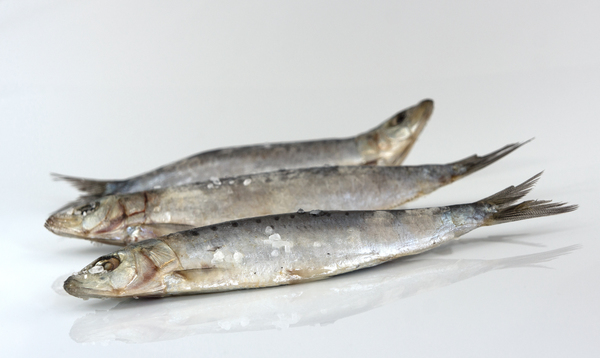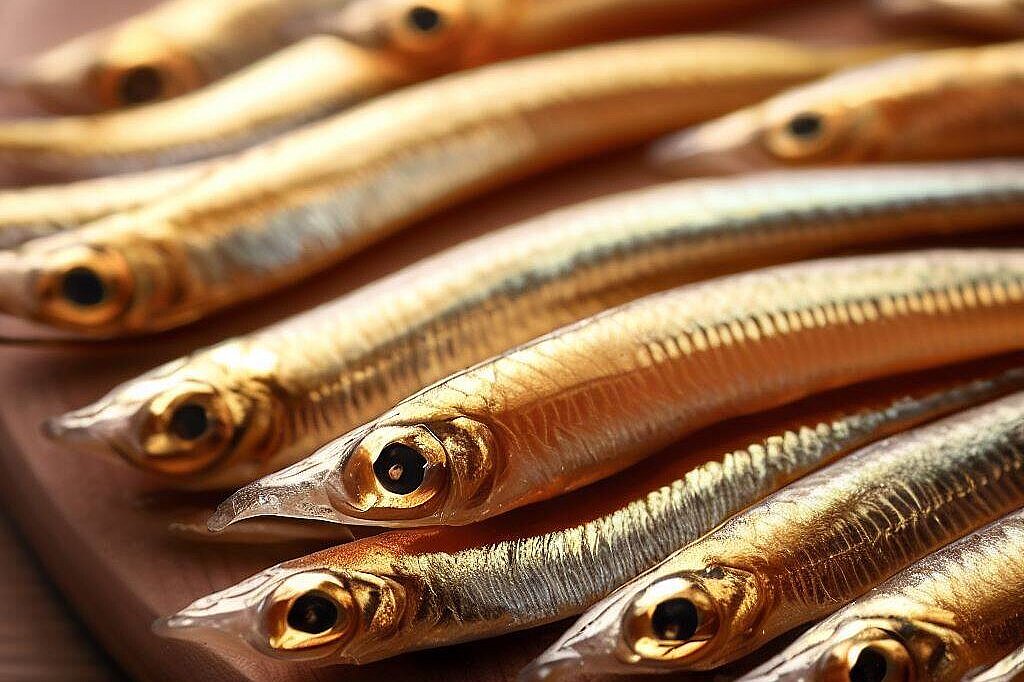Herring

Herring is a popular edible fish with many health benefits for dogs. But what exactly is herring and what should you look out for when feeding herring to your dog? In this article, you can find out more about this type of fish and its advantages and disadvantages for dogs.
What is herring?
Herring are a bony fish that can be found in almost all of the world's oceans. The best-known representative is the Atlantic herring, which is also caught in the North and Baltic Seas. Herring grow to a length of 25 to 50 centimetres and weigh 300 to 600 grams. They feed mainly on plankton and small crustaceans.
What are the benefits of herring for dogs?
Herring is a valuable source of high-quality protein, which is important for muscle building and cell renewal in dogs. Herring also contains many omega-3 fatty acids, which have an anti-inflammatory effect and support the dog's immune system, cardiovascular system, skin and coat. Herring is also rich in vitamins, minerals and trace elements, which are important for the function of the dog's nerves, bones, teeth and blood. The most important nutrients in herring include vitamin A, vitamin D, vitamin B12, iodine, selenium, iron and zinc.
What are the disadvantages of herring for dogs?
Although herring is a healthy fish, it should not be fed to dogs in excessive quantities or too frequently. This is because herring can also contain harmful substances such as heavy metals, dioxins or PCBs, which accumulate in the fatty tissue of the fish. These harmful substances can affect the health of dogs if they are ingested over a longer period of time. Herring can also contain too much iodine, which can lead to hyperthyroidism or hypothyroidism in dogs. Therefore, herring should only ever be used as a supplement to a balanced diet and not as a complete food.
How can herring be fed to dogs?
Herring can be fed raw or cooked, depending on what the dog tolerates and likes. However, raw herring should always be deep-frozen to kill any parasites. It is also important to ensure that the herring does not contain any bones that the dog could injure itself on or swallow. Herring can be offered as a whole fish fillet or in pieces, depending on the size and preference of the dog. The amount of herring should be adapted to the dog's weight, activity level and state of health. As a rule of thumb, herring should not make up more than 10% of the daily food ration.
Herring is a tasty and healthy ingredient for dogs that offers many health benefits for dogs. However, it should only be fed in moderation and as a supplement to a balanced diet to avoid possible disadvantages.
If you notice any signs of hypersensitivity or poisoning in your dog, you should see your vet immediately. We are not a substitute for a vet, but we try to be as accurate as possible. Every dog reacts differently and we recommend you get a second opinion or consult your vet if in doubt.
Stay healthy and take good care of your four-legged friend!😊
Similar to Herring
Sardines are fish that grow to between 10 and 25 centimetres in length and are found in many of the world's oceans. They feed mainly on plankton and are even hunted by larger fish, birds and marine...
Mackerel has many benefits for dogs that can promote both physical and mental health. Here are some of them: Mackerel is a high-quality source of protein, which is important for muscle building,...
Golden anchovies are small fish from the anchovy family that live in the tropical and subtropical waters of South East Asia. They are also known as ikan bilis or ikan teri and are an important...
Sprat is a small fish that grows to around 10 to 15 cm long and has a silvery sheen. It has a slender shape and a pointed snout. Its scales are very small and fall off easily. It feeds mainly on...



